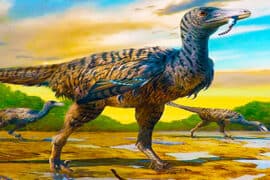California condor
(Gymnogyps californianus)

Description
Gymnogyps californianus, commonly known as the California condor, is a highly endangered species of bird that is native to North America. The condor belongs to the family Cathartidae, which also includes vultures and other scavenger birds. In this article, we will explore the biology, behavior, and conservation efforts surrounding the California condor. Biology and Morphology The California condor is one of the largest birds in North America, with a wingspan of up to 10 feet and a weight of up to 25 pounds. The adult birds have a distinctive black coloration on their wings, with a white triangular patch under their wings, while their heads are bald and pinkish-orange in color. The juvenile birds have a dark brown coloration with a mottled appearance, while their heads are covered with black feathers. Diet The California condor is a scavenger bird that primarily feeds on carrion (the flesh of dead animals). They are known to feed on a variety of large mammals, including deer, cattle, and sheep. They also feed on smaller animals, such as rabbits, squirrels, and rodents. Additionally, the condors will consume fish and other marine animals that wash up on shore. The California condor's specialized digestive system allows it to digest carrion, including bones and tough pieces of meat. The condor uses its keen sense of smell to locate carrion from long distances, and they often feed in groups at a single carcass. While the condor's diet is largely made up of carrion, they have been known to occasionally feed on live animals, such as newborn calves or weak or injured animals. Behavior and Habitat The California condor is a social bird that usually lives in groups, known as flocks. These flocks can consist of up to 30 birds and are often found near cliffs and rocky outcrops. The condor is a slow-flying bird that relies on thermal updrafts to soar for hours without flapping their wings. They can travel up to 150 miles in a single day, searching for food and water. The California condor was historically found throughout much of western North America, ranging from British Columbia in Canada to Baja California in Mexico. However, due to hunting, habitat loss, and poisoning from lead bullets in carrion, the population of California condors declined rapidly in the 20th century. By the 1980s, the species was on the brink of extinction, with only 27 individuals left in the wild. Conservation Efforts The conservation efforts for the California condor have been extensive, spanning several decades and involving numerous organizations, government agencies, and individuals. Some of the key conservation efforts include: Captive Breeding Programs: In 1987, the last wild California condors were captured and brought into captive breeding programs. These programs have been successful in breeding and raising new generations of condors in captivity. Release and Monitoring: Since 1992, captive-bred California condors have been released back into the wild. These birds are fitted with radio transmitters to allow for tracking and monitoring. Habitat Protection: The U.S. government has designated critical habitat areas for the California condor, which are protected from development and other activities that may harm the birds. Private landowners have also contributed to habitat protection efforts by working with conservation organizations to create voluntary conservation easements. Lead Bullet Reduction: The California condor is highly susceptible to lead poisoning from eating carrion containing lead bullet fragments. Efforts have been made to phase out the use of lead bullets in hunting, and in 2019, California became the first state to ban lead ammunition for all hunting purposes. Public Education: Educating the public about the importance of the California condor and its conservation has been an essential component of conservation efforts. Public education programs help raise awareness about the challenges facing the condor and encourage individuals to take action to help protect the species. Overall, these conservation efforts have been successful in increasing the California condor population. As of 2021, there are approximately 500 California condors in the wild, and their population continues to slowly increase. While there is still much work to be done to ensure the long-term survival of the species, the efforts made thus far have been a significant step forward in the conservation of the California condor. Conclusion The California condor is a highly specialized and unique bird that has faced numerous challenges throughout its history. However, thanks to the efforts of dedicated scientists, conservationists, and government agencies, the species has been brought back from the brink of extinction. While the California condor still faces many challenges, including habitat loss and climate change, its success story serves as a testament to the power of conservation and the resilience of nature.
Taxonomic tree:







